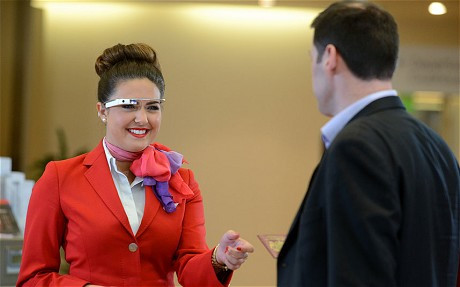Virgin Atlantic Eyes Up Google Glass to Improve Passenger Experience

Staff at Virgin Atlantic's Upper Class Wing at Heathrow Airport now use Google Glass and Sony's SmartWatch 2 to help deliver information to passengers.
As part of the airline's premium concierge service, staff will use Glass to pass on updates about flight times, local events and weather at the passengers' destination, along with offering language translation.
Both devices use a custom application created by project partner and air transport IT specialist SITA. As a passenger arrives at the terminal, the application pushes all relevant information on them and their journey to the assigned concierge.
In the future, Virgin hopes Glass will be able to help manage passengers' dietary requirements and refreshment preferences in a bid to make the experience as personalised as possible.
The company will also trial Apple's iBeacon, the low-powered Bluetooth notification system which can alert iOS devices to nearby services, discounts in airport shops, and updates to a flight's time and departure gate.
Virgin will use the gadgets as part of a six-week trial to try and improve customer experience, which the airline found to have fallen in recent years following a worldwide study of 10,000 passengers.
2014 'the breakout year' for wearable technology
Benefits to the customers and Virgin Atlantic's business will be evaluated over the trial, ahead of a potential wider roll-out of wearable technology in the future.
Dave Bulman, director if IT at the airline, said: "While it's fantastic that more people can now fly than ever before, the fact that air travel has become so accessible has led to some of the sheen being lost for many passengers. Our wearable technology pilot with SITA makes us the first in the industry to test how Google Glass and other wearable technology can improve the customer experience."
Jim Peters, chief technology officer for SITA, said 2014 is "shaping up to be the breakout year for wearable technology".
Not yet on sale to the general public, Google Glass uses a prism to project its user interface into the wearer's right eye. Using voice commands and a touch panel by their temple, wearers can perform Google searches, take photos, browse the web and send email. However, custom applications from the likes of Virgin and SITA are expected to open up an entire new industry for wearable technologies in the near future.
© Copyright IBTimes 2025. All rights reserved.






















